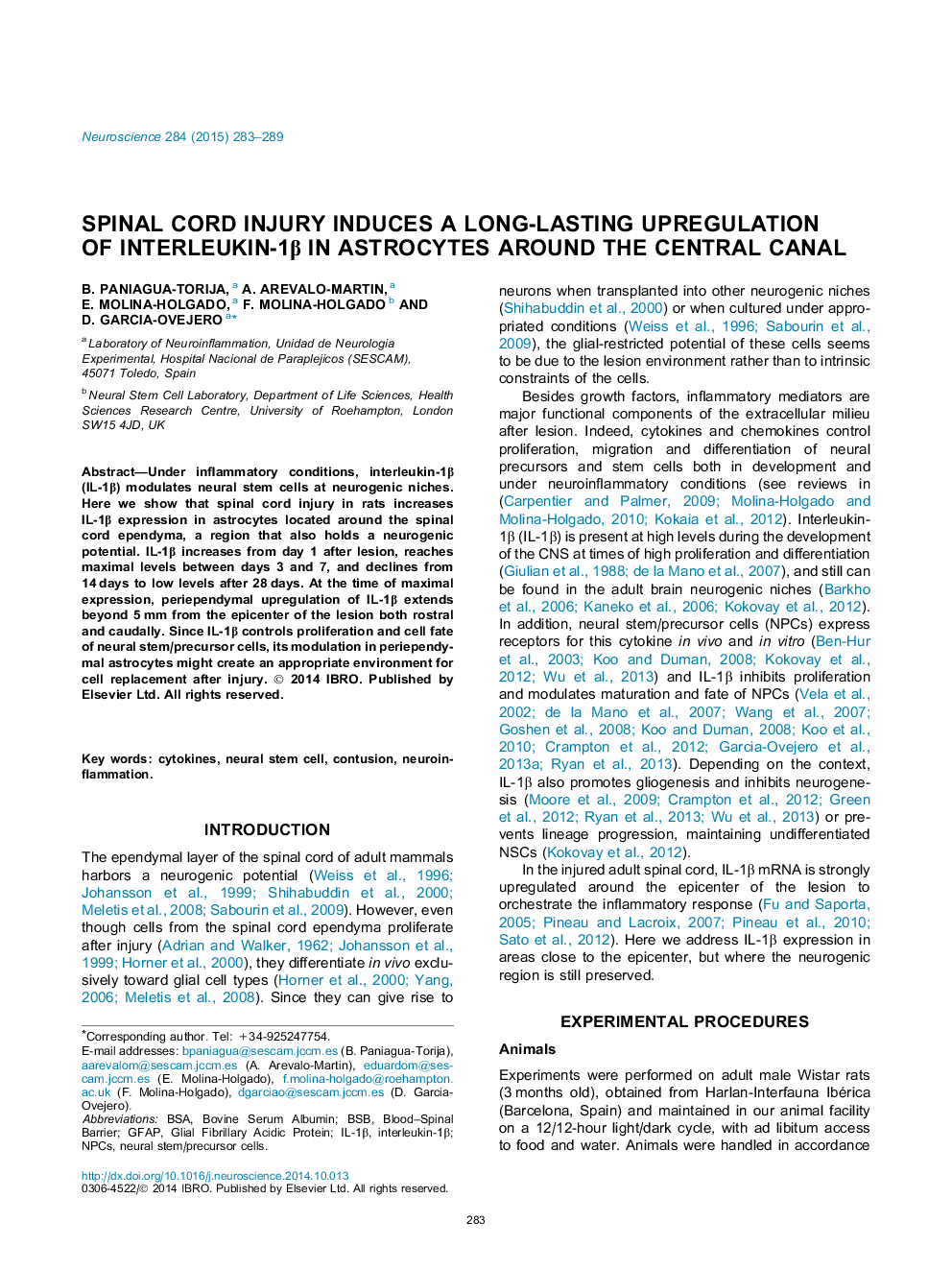| Article ID | Journal | Published Year | Pages | File Type |
|---|---|---|---|---|
| 6273051 | Neuroscience | 2015 | 7 Pages |
â¢Spinal cord injury induces an upregulation of IL-1β around the ependyma stronger than in the rest of the gray matter.â¢IL-1β is detectable at 24 h after injury, reaches maximum levels between 3 and 7 days and returns to low levels at 28 days.â¢Periependymal IL-1β is produced by reactive astrocytes and extends at least 5 mm rostral and 5 mm caudal from the epicenter.â¢IL-1β modulation could be a target to favor recruiting NSCs after spinal cord injury.
Under inflammatory conditions, interleukin-1β (IL-1β) modulates neural stem cells at neurogenic niches. Here we show that spinal cord injury in rats increases IL-1β expression in astrocytes located around the spinal cord ependyma, a region that also holds a neurogenic potential. IL-1β increases from day 1 after lesion, reaches maximal levels between days 3 and 7, and declines from 14 days to low levels after 28 days. At the time of maximal expression, periependymal upregulation of IL-1β extends beyond 5 mm from the epicenter of the lesion both rostral and caudally. Since IL-1β controls proliferation and cell fate of neural stem/precursor cells, its modulation in periependymal astrocytes might create an appropriate environment for cell replacement after injury.
